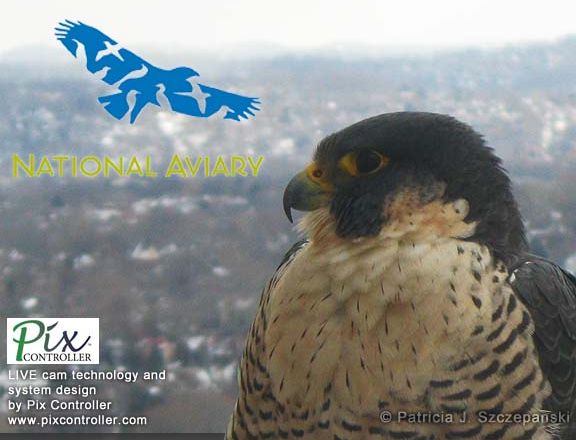
This great horned owl is winking sideways!
He’s closing his nictitating membrane.
The nictitating membrane, or third eyelid, is named for the Latin word “to blink” (nictare). Its function is to protect and moisten the eye while allowing the animal to see. Sometimes the membrane is transparent, sometimes translucent. It depends upon the species.
Birds, reptiles, fish and amphibians have nictitating membranes but in most mammals it’s only a vestigial remnant in the inside corner of the eye. Mammals who swim frequently, such as polar bears and beavers, are one exception to that rule. They have transparent, fully functional third eyelids which they use like underwater goggles.
Though all birds have nictitating membranes it’s rare to see birds blink. Sometimes you can capture a raptor blinking because its eyes are so big and it uses its third eyelid a lot.
Birds of prey close their nictitating membranes while capturing prey. They can’t afford to have the prey scratch their eyes! Peregrines rapidly blink their nictitating membranes while diving at top speed and close them while feeding their sharp-beaked young.
Having said it’s hard to see a bird blink, I’ll show you two examples.
Here’s a female peregrine with her third eyelid closed. Notice that it’s white.

And here’s a Eurasian collared dove with its eyes closed.

It’s all in the blink of an eye. 😉
(photos by Chuck Tague)





 Here’s a conundrum: All birds have crowns but not every bird is crowned.
Here’s a conundrum: All birds have crowns but not every bird is crowned.

